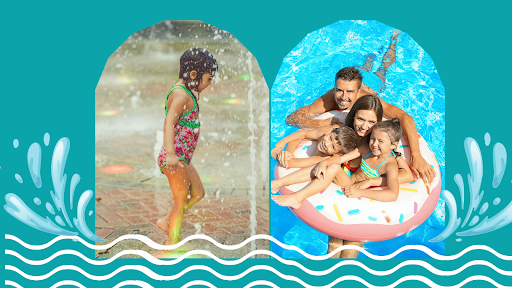Three Reasons To Build A Splash Pad (and Three Things To Consider In Doing So!)
One of the most fun ways to cool off in the summer sunshine is an afternoon in the water - and a splash pad is one of the best ways to create that water fun, especially in an urban setting.


One of the most fun ways to cool off in the summer sunshine is an afternoon in the water - and a splash pad is one of the best ways to create that water fun, especially in an urban setting.
Splash pads are growing increasingly more popular in park design because they can…
...integrate easily into your community. Whether adding to an existing community or starring as a feature attraction of a new build area, splash parks can be a more cost-effective, lower impact alternative to larger aquatic infrastructures (such as a community pool, for example) as part of the placemaking process. Splash parks are a great way to bring a new way to play directly into communities, creating a gathering place for friends and families to enjoy the summer weather together.
...create more inclusive, sensory play. Water play is a powerful learning tool for a child’s learning and development, helping children explore activities like splashing and pouring, while also learning more about textures (slippery or dry), temperatures (hot or cold) and measurement (full or empty). Many splash parks can be easily designed to be inclusive of all-ages and all-abilities, meaning more opportunity for everyone to have more fun, together.

...drive eco-friendly play initiatives. Using water-circulation systems, like this park of ours in Edmonton, your splash pad can help minimize the park’s environmental footprint and using less water than traditional flow-through systems. Plus, these systems generally create a higher flow rate, meaning more splash per play!
Once you’re ready to build an urban fountain of fun, there are three key considerations to remember:

The Splash (of course!). Identifying the types of features your splash pad will have will determine the type of water play your park will create, and for whom it is best suited. Toddlers, for example, will require equipment that’s easy to interact with, is lower to the ground and with lower flow. Or, you may wish to have an area more suited to older children, with more multi-player driven play like nozzle stations, water tunnels or flow-manipulation equipment.
The Surfacing. Typically, splash pads are finished with concrete bases to manage the rigour of both the play and the elements, including damage from sunshine, chlorine or bacteria. Increasingly, though, synthetic surfaces are becoming more popular in materials that are both protective of the surfaces and the participants, aiming to make taking a tumble a little less painful than if done so on concrete.
The Supervision. The equipment and set up of your park may dictate certain requirements for play supervision, whether that means adult supervision through the guardian(s) of children at play or a dedicated park supervisor. Whichever path you choose, it’s important to always reinforce that children should never be left unattended by water - even for a minute.
In working with city planners, community developers and landscape architects across Canada, we see that water-play continues to grow more popular as a gathering point, play of play and centre of community in urban centres across Canada.
Ready to add a splash pad to your community? Contact us to get started.








